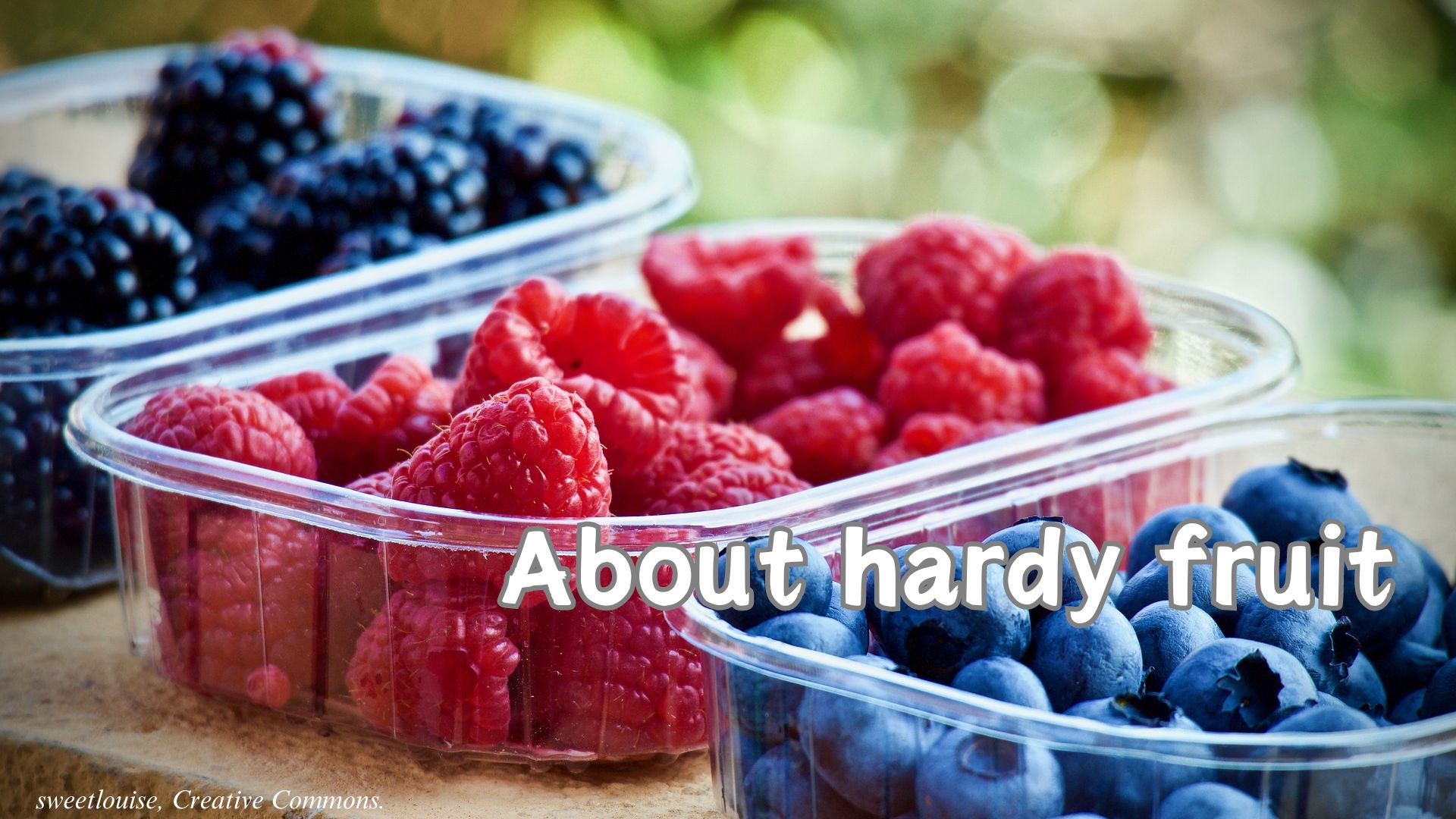
10 Neat Things about hardy fruit
10 Neat Things about hardy fruit
By Shauna Dobbie, June 20, 2024
1. Small fruit.
Thinking about growing fruit in the land where winter is endless, nights are long, and both are bitterly cold? There are a few fruit trees that are hardy to Canadian Zones 2 or 3 (or even Zone 1), including some apples, pears, cherries and plums, but fruit grows better on shorter bushes, subshrubs and non-woody plants. The fruit you can grow in cold-winter areas is also smaller than what you see at the grocery store. It is often more tart, but some fruits, like strawberries, are sweeter.
2. Developing hardiness.
Scientists continue to work to figure out what makes one plant hardier than the next and to figure out how to develop hardier plants. The trouble is that there are several stages plants, including trees and shrubs, must go through in winter. “Time and rate of development of hardiness, retention of hardiness, time and rate of dehardening and ability to reharden, all contribute to winter hardiness and survival of a plant,” according to an old article in the Canadian Journal of Plant Science.
3. Strawberries.
New gardeners can plant strawberries in their first year of gardening to get the immediate benefit of fruit. The woodland strawberry (Fragaria vesca) is hardy to Zone 2a at least. Although all strawberries grow well in hanging containers and strawberry pots, if you want them to live beyond the summer you’ll need to plant them in the ground and pile straw or dead leaves on top of them for winter. Pay them a little attention and you will be able to harvest a few in the first year, unless slugs or birds get them before you do!
4. Kiwis.
Yes, you can grow a small version of this green fruit with the pretty white centre and black seeds. Arctic kiwi is hardy to Zone 3. You need a male and a female. The vine spreads super quickly but the fruit can take five to nine years to appear. Fruit is produced on one-year-old branches on the female only so you can prune off anything that has already fruited. Also? They are virtually pest free!
5. Blueberries.
This is a plant where the pH value of your soil is very important. Blueberries will not be successful at a pH over 5.5. In the Atlantic provinces, with more acidic soils, go for it; in the Prairie provinces, your soil is almost certainly trending toward alkaline. If you have the soil that blueberries will thrive in, you can get half-high blueberries that are hardy to Zone 3. If you can find them, Bushel and Berry growers has a couple of hanging container blueberries, hardy to Zone 5; I just haven’t figured out what to do with them through the Winnipeg winter yet!
6. Rhubarb.
What induced earlier people to cultivate rhubarb? The leaves are poisonous and the stems are quite sour unless you add sugar. Nonetheless, it appeared in a Chinese herbal written 1,800 years ago. It is hardy to Zone 2, you can’t kill it and it won’t take over beyond its natural space of about five feet around. Being hardy and high in vitamin C and fibre, it was planted in Canada in the 1770s by fur traders to prevent scurvy from their mostly meat diet.
7. Apples.
According to hardyfruittrees.com, the 9-22 End is the hardiest good-tasting apple tree out there, hardy to Zone 1. You need to eat it right away because it doesn’t keep. September Ruby is also hardy to Zone 1, according to northernhomestead.com. At the other end of the spectrum, Dorsett Golden, which grows well in the Bahamas, requires fewer than 100 “chill hours” (hours under 7 Celsius) to set fruit. The wide variety of hardiness and chill requirements helps to explain why apples make up a full half of the world’s fruit production from deciduous trees.
8. Sea buckthorn.
These trees can survive at temperatures ranging from -43 to +40 degrees Celsius. It originates in Europe and Asia and, if you hadn’t heard, is sometimes touted as a superfood. It is high in vitamin C and contains vitamins E and K and a wide variety of antioxidants. It is also a nitrogen fixer, a soil-erosion preventer, and has oils that are excellent for skin. The only thing it doesn’t do is walk on water! But there is a problem with it: it is very invasive.
10. Apricots.
Apricot trees can withstand very cold temperatures, as low as -34 Celsius. The problem for people in most of Canada is that the apricot buds can die at -20 Celsius. Add to that, many areas will experience late frost after apricots have bloomed, which can abort the fruit. A possible solution is to plant your hardier-species apricot tree (like Goldcot or Harcot) in a shadier area, which may prevent it from blooming until later in the spring, and hopefully after all threat of frost has passed.












